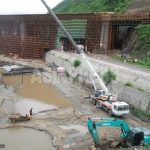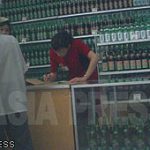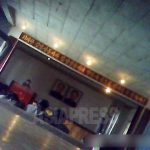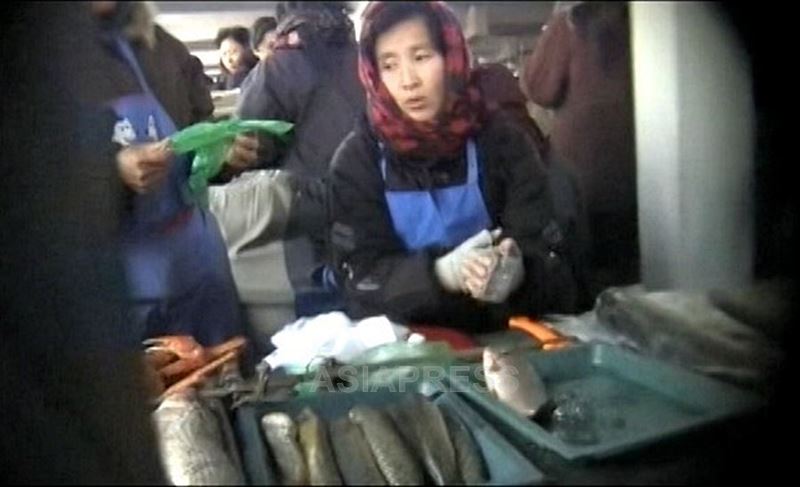
From late November to early December, ASIAPRESS conducted a survey of North Korea’s fishing industry through reporting partners inside the country. The first installment of this series reported that due to the COVID-19 pandemic fishing boats were rarely allowed to leave their ports, and that the industry continues to decline due to government restrictions and skyrocketing fuel prices. The second installment of this series focuses on the distribution of seafood inside North Korea. The Kim Jong-un regime’s economic controls have disrupted the distribution of seafood by private and small-scale business people. (KANG Ji-won / ISHIMARU Jiro)
◆ What was surveyed?
The survey involved reporting partners in North Hamgyung and Yanggang provinces exploring three areas: 1) the fishing situation in the East Sea region; 2) the state of transport and distribution of seafood; and 3) the cost of various seafood in markets. The reporting partners were unable to visit areas with seaports due to severe restrictions on their movement; however, they made domestic phone calls to people working in the fishing and seafood industries and met with local business people involved in seafood sales. The survey was able to garner information about the situations in Chongjin, Kimchaek, Myongchon County, and Hamhung (South Hamgyung Province). The survey couldn’t gather information about the situation on the West Sea, unfortunately.
◆ Severe restrictions on movement and distribution due to COVID
After the COVID-19 pandemic began in January 2020, the North Korean authorities implemented severe restrictions on movement to prevent the spread of the virus. In addition to police, military and state security service checkpoints on roads, a large number of “quarantine checkpoints” were established.
These unreasonable government measures were aimed at stopping the movement of people and goods. The measures heavily impacted the distribution of goods between regions. The only entities allowed to transport goods were government agencies, trading companies with government permission, and commercial management centers focused on the transport of official goods.
The private “servicha” services that were the mainstay of the transport of people and goods before the COVID pandemic were also severely impacted by the measures.
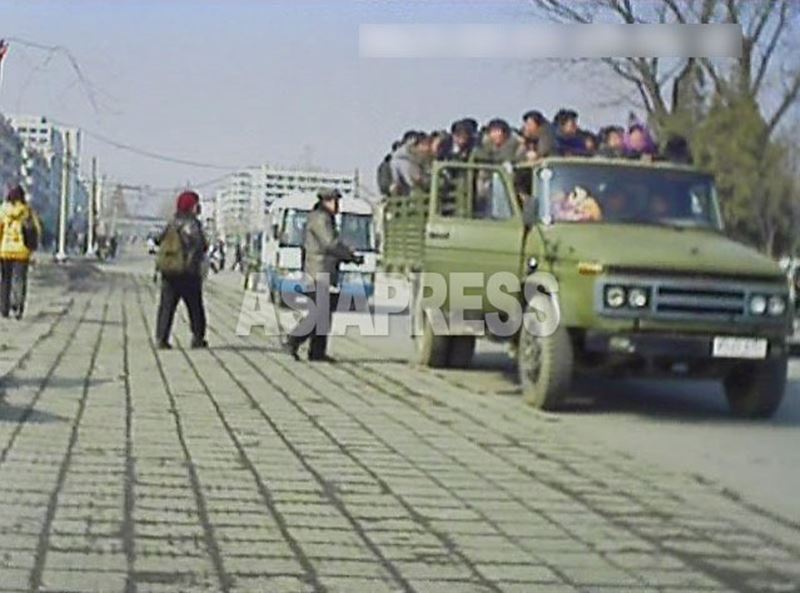
◆ At one time, private manufacture and distribution of goods was a bustling business
On the East Sea coast, people living near ports purchased the fish and squid caught by fishing companies in bulk, turned them into dried and salted seafood products, and then placed them in bags to take to cities to sell. The middlemen in this trade - the donju, or North Korea’s wealthy entrepreneurial class - bought these products en masse and transported them by truck to sell to urban market sellers. Cities on the East Sea coast, including Chongjin, were active places of business during the squid catching season.
However, these bustling business activities have almost disappeared, according to a reporting partner. “Individual businesspeople find it almost impossible now to move their seafood from ports to other places by vehicle. They may have their products confiscated,” he said.
The restrictions on the distribution of goods have become more stringent since North Korea loosening its COVID restrictions. This is due to the fact that the Kim Jong-un regime has changed its policies to strengthen government control over the economy.
In early August, the regime suddenly announced an order that required the distribution of goods to be solely conducted under the management of the government. The order clearly stipulated that private citizens are not allowed to transport or store products or food, and that they are not allowed to calculate their own prices for goods. In order, the order required that all goods go through the state-run distribution network. Severe violators of the order face execution, showing how seriously the government intends to crackdown on private sales of products.
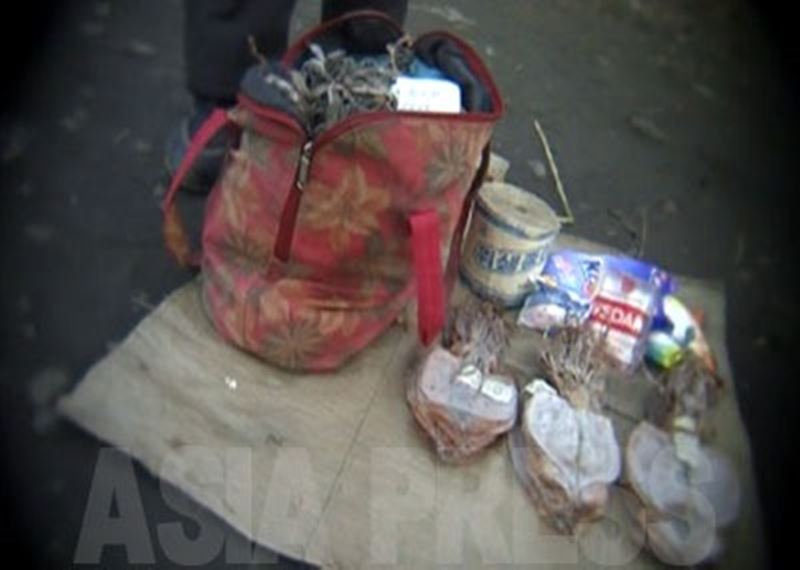
◆ Even large fishing companies face difficulties
In the past, large fishing companies exported the seafood they caught to China, earning large profits that were then handed over to their affiliated government agencies. However, UN Security Council economic sanctions implemented in 2017 prohibited North Korea’s export of seafood. Despite the sanctions, North Korea continued to smuggle seafood into China before the start of the pandemic in January 2020.
While smuggling was mostly halted during the pandemic, ASIAPRESS’s survey of the North Korean fishing industry was unable to confirm reports that North Korea is increasing its smuggling of seafood into China following the loosening of COVID restrictions.
The reporting partner told ASIAPRESS: “Government agencies tell the fishing companies to recover the costs spent on catching seafood by selling it to trading companies or state-run commercial entities (such as state-run food shops); however, expensive fuel costs and the lack of means of transport make it difficult for seafood to be distributed inside the country. The cost of fuel is so expensive that seafood market prices remain high, irregardless of whether fishing companies can sell their products to China or not.”
If that’s the case, how much does seafood cost in markets? The next installment will explore this question.
※ ASIAPRESS communicates with reporting partners through Chinese cell phones smuggled into North Korea. (To 3 >>)
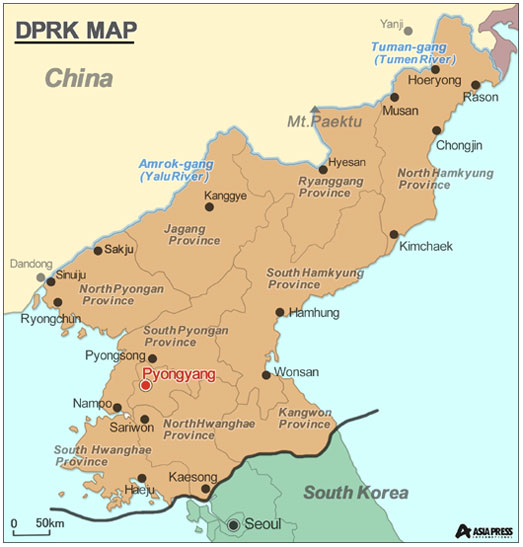
<Investigation Inside N. Korea> How is the country’s fishing industry doing? (1) COVID and shrinking fishing grounds major problems…Kim regime’s restrictions on fishing lead some fishermen to financial collapse
<Investigation Inside N. Korea> How is the country’s fishing industry doing? (3) Prices of eight kinds of popular seafood in 2 cities
- <Inside N. Korea> The government distributes coal as winter sets in…, but only 15% of what people need…Robberies of firewood and coal are common
- <Inside N. Korea>Bootleg liquor is an anti-state act The government launches harsh crackdowns, aims to monopolize distribution of alcohol and prevent shortages of grain
- <Inside N. Korea>Speaking to a Border Guard (1) Landmine Burial at the Korea-China Border? “Even soldiers are afraid because they don’t know where they’re buried”
- <Inside N. Korea> A recent report on conditions at farms (1) The harvest is better than last year, but lack of materials remains a serious problem (4 recent photos)
- <Inside N. Korea>Unusual changes in the Army (1) In a rare move, police are tasked with cracking down on breaches of military discipline as crimes by soldiers and desertions increase
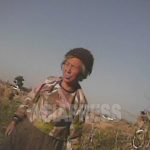

![[Video Report] People under pressure for requisition of military provision](https://www.asiapress.org/rimjin-gang/wp-content/uploads/2018/07/20140129_R_asiapress1X450-150x150.jpg)
